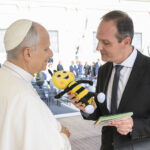Can Mythical Creatures Teach Us About Resilience?
Resilience is a fundamental human trait that enables individuals and societies to recover from setbacks, adapt to change, and emerge stronger. Throughout history, myths and stories have served as powerful tools to illustrate resilience, often through fantastical creatures that embody endurance, transformation, and hope. By exploring the symbolic significance of these mythical beings, we can gain deeper insights into our own capacity to withstand adversity and foster growth.
Table of Contents
- Understanding Resilience Through Mythical Creatures
- The Concept of Resilience: What It Is and Why It Matters
- Mythical Creatures as Symbols of Endurance and Transformation
- Gothic and Mystical Settings as Metaphors for Overcoming Darkness
- The Scythe and Its Dual Symbolism of Death and Rebirth
- Modern Artistic Expressions of Resilience: The Case of «Phoenix Graveyard 2»
- Lessons from Mythical Creatures for Personal Resilience
- Depth and Diversity: Non-Obvious Perspectives on Resilience
- Conclusion: Integrating Myth and Art into Our Resilience Narrative
Understanding Resilience Through Mythical Creatures
Resilience manifests both individually and culturally. On a personal level, it refers to the ability to bounce back from failures, losses, or trauma, often involving emotional fortitude and adaptability. Culturally, resilience is reflected in how communities recover from disasters, societal upheavals, or historical hardships. Mythical creatures frequently symbolize these resilient qualities in storytelling, serving as archetypes that inspire hope and perseverance.
The Concept of Resilience: What It Is and Why It Matters
Psychological and Emotional Resilience Explained
Psychological resilience involves the capacity to maintain or regain mental health despite adversity. Research shows that resilient individuals possess traits such as optimism, flexibility, and emotional regulation. For example, studies published in the Journal of Positive Psychology highlight that resilient people often interpret setbacks as opportunities for growth, which aligns with mythic themes of transformation.
Cultural Resilience: How Societies Recover from Adversity
Societies demonstrate resilience through collective efforts to rebuild, adapt, and evolve after crises. Mythology often encapsulates this resilience—consider the rebuilding of civilizations in mythic narratives or the phoenix’s cycle of death and rebirth, symbolizing renewal after destruction.
The Role of Myths and Stories in Fostering Resilience
Stories featuring mythical creatures serve as cultural tools that transmit resilience values across generations. They provide frameworks for understanding adversity, emphasizing perseverance, hope, and renewal. These narratives help individuals interpret their struggles within a larger, meaningful context.
Mythical Creatures as Symbols of Endurance and Transformation
Many mythical creatures epitomize resilience through their stories of endurance, rebirth, and transformation. These symbols often serve as metaphors for human struggles and triumphs.
The Phoenix: A Universal Emblem of Rebirth and Resilience
The phoenix, originating from ancient Egyptian and Greek mythology, is renowned as a creature that rises from its ashes. Its cycle of death and rebirth exemplifies resilience—an enduring symbol of overcoming destruction to emerge renewed. Modern interpretations often link the phoenix to personal transformation after failure, emphasizing hope and persistence.
Other Mythical Creatures Representing Perseverance
Dragons are often depicted as powerful, resilient beings that guard treasures and withstand numerous battles, symbolizing strength and perseverance. Kobolds, although less prominent, represent resourcefulness and adaptability in mythic tales. Comparing these with real-world examples, such as resilient animal species or survival stories, reveals how mythic resilience mirrors human and ecological endurance.
Comparing Mythic Resilience with Real-World Examples
For instance, the resilience of the American bison after near-extinction parallels the phoenix’s rebirth. Similarly, communities rebuilding after natural disasters often invoke mythic imagery to inspire hope, illustrating how stories of mythical endurance are embedded in our collective psyche.
Gothic and Mystical Settings as Metaphors for Overcoming Darkness
Dark, atmospheric settings like graveyards and gothic architecture symbolize transitions, endings, and new beginnings. These environments serve as metaphors for resilience, emphasizing that even in darkness, there is potential for renewal.
Graveyards and Gothic Architecture
Historically, graveyards mark the end of life cycles but also serve as places of remembrance and hope for rebirth. Gothic architecture’s towering spires and intricate designs evoke a sense of mystery and the unknown, suggesting that confronting darkness is essential for growth.
Fog Effects in Art
Artistic use of fog creates an atmosphere of uncertainty, danger, yet also potential discovery. This symbolism encourages viewers to embrace ambiguity as part of resilience—the recognition that clarity often emerges after navigating through obscurity.
Influence of Setting on Resilience Narratives
Settings shape our understanding of resilience by framing challenges as part of a larger journey. For example, stories set in bleak landscapes or shadowed structures highlight the importance of perseverance amid adversity.
The Scythe and Its Dual Symbolism of Death and Rebirth
The scythe, traditionally associated with harvest and mortality, embodies themes of ending and renewal. Its dual symbolism reflects the natural cycles that underpin resilience—death paves the way for rebirth.
Historical and Cultural Significance of the Scythe
In agrarian societies, the scythe was a vital tool for harvest, symbolizing sustenance and the cycle of life and death. In cultural narratives, it often appears as a reminder of mortality, prompting reflection on the importance of resilience in facing life’s inevitable endings.
Metaphor for Transformation and Resilience
Using the scythe as a metaphor emphasizes that letting go of what no longer serves us is essential for growth. It underscores that resilience involves accepting endings as preludes to new beginnings, aligning with natural cycles of renewal.
Connecting Symbols of Mortality with Cycles of Renewal
By acknowledging mortality, individuals and societies can better appreciate the resilience required to evolve. The scythe reminds us that every ending is an opportunity for rebirth—an essential lesson for sustainable resilience.
Modern Artistic Expressions of Resilience: The Case of «Phoenix Graveyard 2»
Contemporary art continues to explore themes of resilience, often drawing inspiration from myth and gothic motifs. One compelling example is the artwork titled «Phoenix Graveyard 2», which visually encapsulates the cycle of death and rebirth through a modern lens.
Visual Analysis of «Phoenix Graveyard 2»
This piece depicts a haunting landscape where the phoenix rises amidst ruins, blending gothic elements like dark skies and decayed structures with vibrant imagery of rebirth. The juxtaposition of decay and renewal emphasizes resilience’s dual nature—embracing loss as a catalyst for transformation.
Depicting Resilience Through Myth and Gothic Motifs
Artists like those behind «Phoenix Graveyard 2» use symbolic imagery to inspire viewers, illustrating that resilience is both a personal and collective journey. The integration of mythic symbolism with gothic aesthetics creates a compelling narrative of hope amid darkness.
Role of Art in Inspiring Viewers and Creators
Artistic representations of resilience serve as catalysts for reflection and motivation. They encourage viewers to find strength in symbolism, fostering a mindset that views setbacks as opportunities for rebirth. For those interested in exploring such themes, visiting this blog offers insights into how contemporary art continues to interpret timeless resilience principles.
Lessons from Mythical Creatures for Personal Resilience
Mythical creatures like the phoenix teach us that embracing change and rebirth after failures or losses is essential for growth. Their stories serve as metaphors for resilience—highlighting hope, persistence, and transformation as vital to overcoming challenges.
Embracing Change and Rebirth
Just as the phoenix rises anew from ashes, individuals can view setbacks as opportunities for renewal. Cultivating this mindset involves reframing failure as a necessary step in personal evolution.
Cultivating Hope and Persistence
Symbolic understanding of resilience encourages hope even in dire circumstances. Persisting through difficulties, much like mythical creatures do, reinforces the human capacity for endurance.
Practical Applications in Daily Life
- Adopt a growth mindset after setbacks, viewing failures as learning opportunities.
- Use symbolic imagery—like a phoenix rising—to motivate perseverance during tough times.
- Engage with art and stories that reinforce resilience principles, fostering emotional strength.
Depth and Diversity: Non-Obvious Perspectives on Resilience
Resilience stories vary greatly across cultures, reflecting diverse beliefs and values. Recognizing this diversity enriches our understanding of resilience as a universal yet culturally specific phenomenon.
Cultural Variations in Mythical Resilience Stories
In Japanese mythology, the crane symbolizes longevity and renewal, while in Norse legends, the World Tree Yggdrasil embodies interconnected resilience and rebirth. These stories highlight different aspects of resilience, shaped by cultural contexts.
The Paradox of Resilience: Vulnerability and Strength
True resilience involves acknowledging vulnerability—recognizing that strength often coexists with vulnerability. Mythical stories often depict heroes who face their fears, illustrating that resilience is not the absence of weakness but the courage to persist despite it.
Environmental and Symbolic Influences
Settings like graveyards or foggy landscapes influence resilience narratives by emphasizing the importance of confronting darkness to achieve renewal. These symbols serve as reminders that resilience is rooted in facing and transforming adversity.
Integrating Myth and Art into Our Resilience Narrative
Drawing from myth, art, and symbolism allows us to craft a richer understanding of resilience. These elements provide stories and visuals that inspire hope, perseverance, and renewal. The example of «Phoenix Graveyard 2» exemplifies how contemporary art continues to explore these timeless themes, serving as a modern testament to resilience’s enduring power.
“Resilience is not merely enduring the storm but learning to dance in the rain, inspired by the mythic creatures that remind us of our enduring strength.”



























